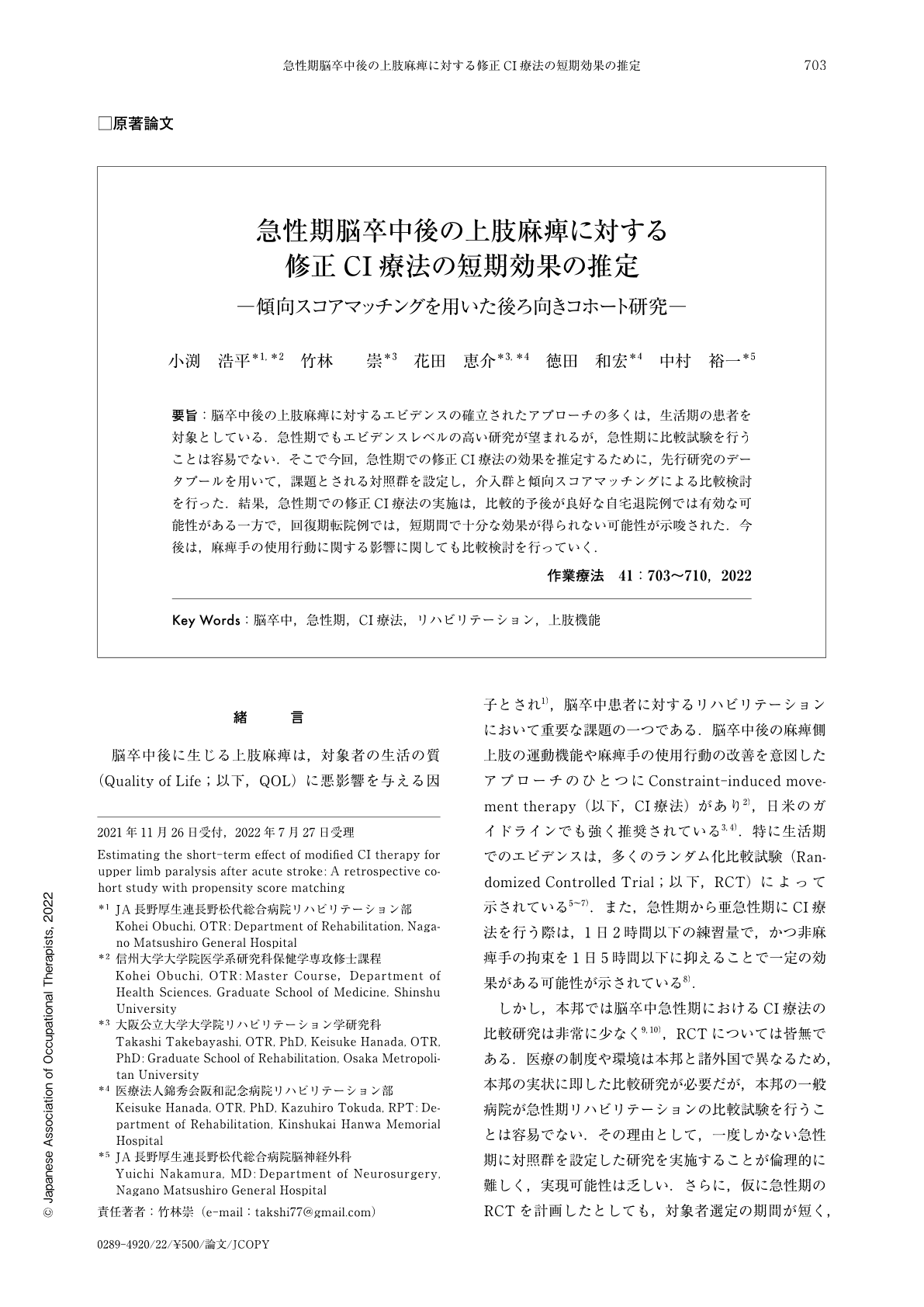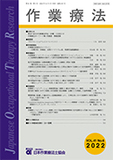Japanese
English
- 販売していません
- Abstract 文献概要
- 1ページ目 Look Inside
- 参考文献 Reference
- サイト内被引用 Cited by
要旨:脳卒中後の上肢麻痺に対するエビデンスの確立されたアプローチの多くは,生活期の患者を対象としている.急性期でもエビデンスレベルの高い研究が望まれるが,急性期に比較試験を行うことは容易でない.そこで今回,急性期での修正CI療法の効果を推定するために,先行研究のデータプールを用いて,課題とされる対照群を設定し,介入群と傾向スコアマッチングによる比較検討を行った.結果,急性期での修正CI療法の実施は,比較的予後が良好な自宅退院例では有効な可能性がある一方で,回復期転院例では,短期間で十分な効果が得られない可能性が示唆された.今後は,麻痺手の使用行動に関する影響に関しても比較検討を行っていく.
Most evidence-based approaches to upper extremity paralysis after stroke are based on patients in the living phase. Although studies with a high level of evidence are desirable in the acute phase, it is not easy to conduct comparative studies in the acute phase. Therefore, this study used a data pool of previous studies to establish a control group, which was considered a challenge, and compared it with the intervention group by propensity score matching in order to estimate the effect of modified CI therapy in the acute phase. The results suggest that the implementation of modified CI therapy in the acute phase may be effective for cases discharged home with a relatively good prognosis, while it may not be sufficiently effective in a short period of time for cases transferred to the convalescent phase. Future studies will also compare the effects on the behavior of using the paralyzed hand.

Copyright © 2022, Japanese Association of Occupational Therapists. All rights reserved.


